LEIPZIG, GERMANY - The sound of music lures me to the entrance of historic Thomaskirche (St. Thomas Church) where I watch in amusement as tourists aggressively elbow each other to take a selfie in front of the alter tombstone of Germany’s legendary composer Johann Sebastian Bach. “He’s not going anywhere, folks,” I feel like telling them.
In the choir loft above my head, the world renowned St. Thomas Boys Choir, which Bach once conducted, is practicing for an evening concert — their angelic voices echo through the rafters of the great Lutheran church where Martin Luther himself preached in 1539. The organ on which Bach first learned to play also stands in the choir loft, a monument now to his musical genius.
Later, I push open a yawning door near the alter and find more musical instruments from Bach’s time — some he reportedly played — grouped together in glass display cases.
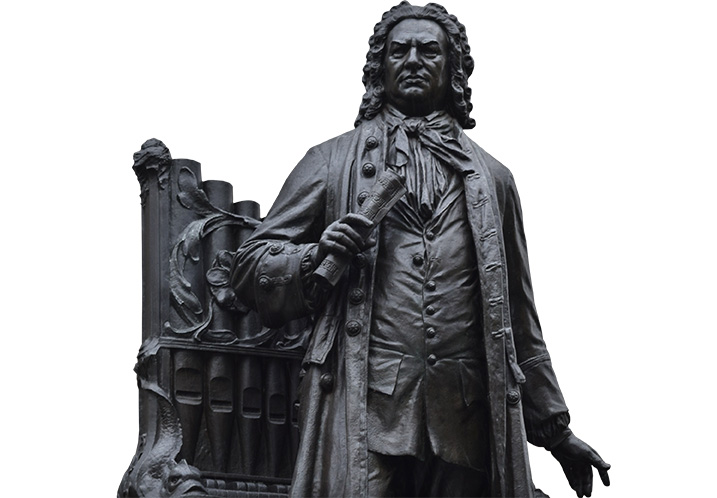
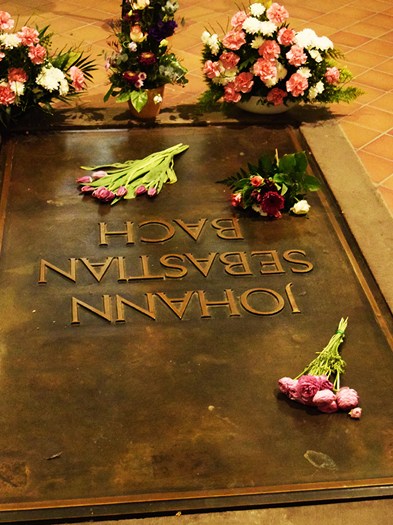
Above: Bach is buried in Thomaskirche and his statue sits outside.
While admiring the instruments and listening to the choir, I quickly come to appreciate why they call Leipzig “Germany’s Music City.”
It’s a title that lovely Leipzig wears proudly. After all, over 500 of history’s greatest composers have lived and worked here over the centuries — Felix Mendelssohn, Robert Schumann and Richard Wagner among them. Mendelssohn actually established Germany’s first music conservatoire in Leipzig in 1843. But it was Bach who really put Leipzig on the global music stage and whom people from all over the world come here to celebrate.
In the courtyard outside the Thomaskirche, fans stand in the shadow of Bach’s bronze statue waiting to get into the church to hear the choir, which first started performing in 1212.
Bach served as kapellmeister (choir director) from 1723-1750 at St. Thomas, a beautiful Gothic structure whose stained glass windows have few equals — its 68-metre-high tower has always been a beacon in Leipzig’s Old Town.
Leipzig is best known in modern history as the place where the Montagsdemonstrationen (Monday protest marches) started in 1989. Those protests marked the beginning of the peaceful revolution that eventually led to the fall of communism in the German Democratic Republic (GDR) and to the reunification of Germany in 1990. While the Berlin Wall separated West Berlin from East Berlin and the GDR, the Inner German Border divided East (communist) from West (capitalist) Germany. However, neither was in or close to Leipzig.
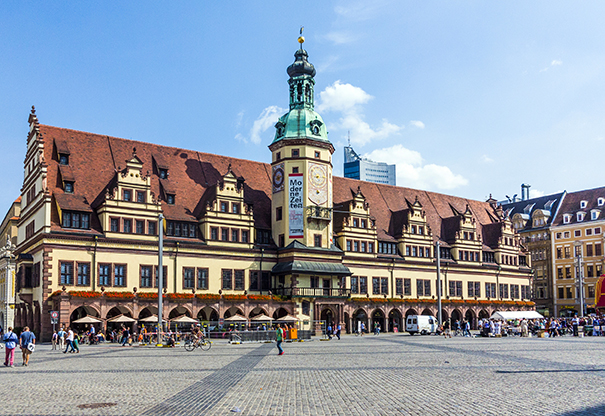
Above: Leipzig's original Town Hall dominates the Old Town square.
While Leipzig’s history dates back to the early days of the Holy Roman Empire — circa 1015 — it flourished during the Reformation era as a great trading centre. Reminders of those lucrative trading days can still be seen in the city’s small but elaborate Italian-style shopping malls tucked away in narrow passages and arcades; they make Leipzig look like a mini Milan.
Leipzig was the scene of one of Martin Luther’s greatest triumphs in his Reformation drive. In 1519, Luther debated John Eck, the defender of the Catholic Church, for three weeks in Leipzig in front of Duke George of Saxony. While apparently there was no clear winner of the debate, Martin’s passionate presentation convinced many it was time to break away from Rome.
“Luther did not like coming to Leipzig,” a server at the city’s landmark Auerbach’s Keller (Cellar) restaurant informs me. “Leipzig was apparently too bourgeois for his liking.”
The 16th-century Cellar is the second oldest restaurant in Leipzig and is located beneath one of the city’s most famous shopping arcades in Mädler Passage. A mini museum honouring Luther has been erected in one of the restaurant’s former wine cellars. It’s decorated with some interesting sculptures and art from Luther’s period.
The traditional German fare served here is exceptionally good but despite the fact the Cellar has five dining rooms, it’s usually hard to get a table, especially at dinner time.
After a wonderful lunch at Auerbach’s Keller, washed down with a local Pilsner, I wander through the nearby Old Town Market Square where farmers are packing up after a day of selling their produce to the locals.
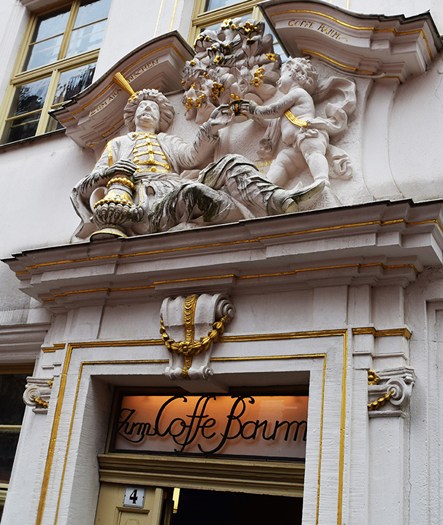
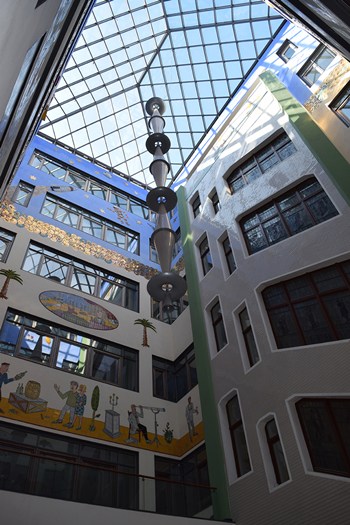
Above: Leipzig is a city of coffee houses and Italian-style shopping arcades.
The handsome square is dominated by Old City Hall and a number of other historic buildings, many of which are painted crayon colours. The Old City Hall, a Renaissance building erected in 1556, and its impressive clock tower, casts a shadow across the square where musicians entertain office workers who are enjoying their lunch on this sun drenched day.
A number of coffee shops also ring the square — Leipzig’s coffee culture is legendary, dating all the way back to the 17th century.
“The reason why Saxony (the state where Leipzig is located) is one of the smallest in Germany is because in ancient times our soldiers would tell their commanders they would not fight until they had finished their coffee. So we kept losing wars and land,” a guide I meet tells me.
The most famous coffee house in Leipzig, and all of Europe for that matter, is Coffe Baum, which first opened in 1556, making it the second oldest on the continent. It was regularly frequented by the likes of Robert Schumann and other famous musicians.
The eye-catching Baroque sculpture hanging above the café’s entrance harkens back to 1720 and was once used to identify the premises before Napoleon arrived and made all the houses be identified by numbers.
The Old Town is really an open-air museum filled with lots of historic buildings and squares. One of the most impressive squares is the Naschmarkt, which sits directly behind Old City Hall. It’s home to a lovely Baroque building that once housed the city’s Alte Handelsbörse (Commercial Exchange) and dates back to 1678. An imposing statue standing in front of the Alte Handelsbörse honours Johann Wolfgang von Goethe, the noted German writer and poet who studied in Leipzig.
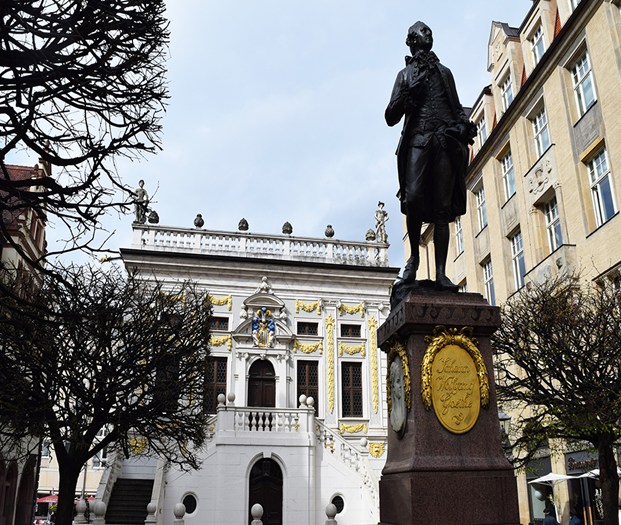
Above: Leipzig's squares are some of the best in Europe.
A short walk away I find Sachsenplatz, another handsome square dominated by some impressive fountains and a dramatic ceramic column depicting scenes from the city’s distinguished history.
Later I find myself standing in front of Nikolaikirche (St. Nicholas Church), the epicentre of the peaceful revolt in 1989 that led to the bringing down of the Berlin Wall. The lovely church is revered by the 570,000 citizens of Leipzig because it represents their freedom. A column standing in the small square opposite the church was erected to honour the peaceful movement that brought Leipzig back into the German fold.
In the corner of the square, an elderly violinist is playing Bach and passersby stop to listen. Just another day in Germany’s Music City.
Information
The best way to get to Leipzig from Canada is with Lufthansa via Frankfurt or Berlin. Air Canada also offers daily service to Frankfurt. / In 2017, Germany will celebrate the 500th anniversary of Martin Luther’s Protestant Reformation and because Leipzig played such an important role in that historic event, the city is planning many special events. / For tourist information on Germany, and Leipzig, go to www.germany.travel/en/index.html
About the Author
Marc Atchison is a veteran journalist and a seasoned traveller with more than 20 years of travel writing experience. As the former Travel Editor of the Toronto Star, Canada's largest newspaper, and now Editor-in-Chief and Senior Writer for TraveLife magazine (Canada) and travelife.ca, Marc has been to over 100 countries in the world. Japan is one of his favorite destinations and he's been there on numerous occasions.